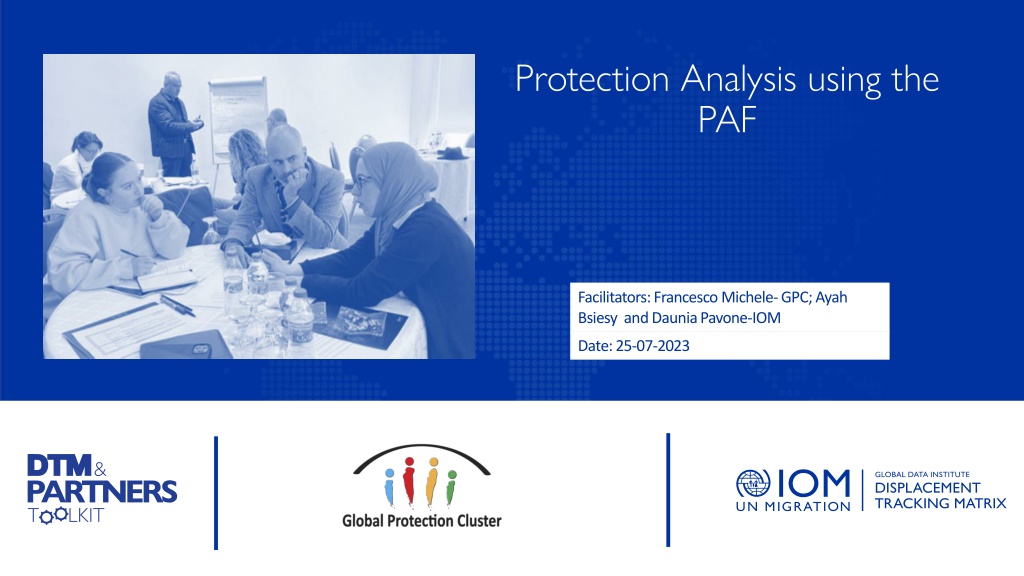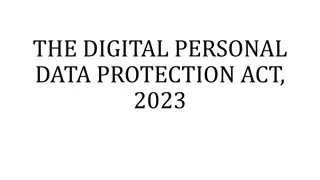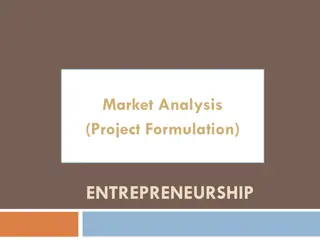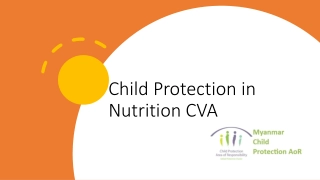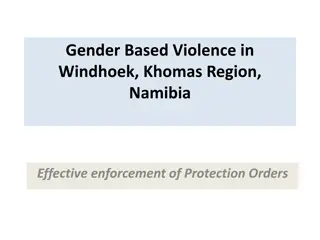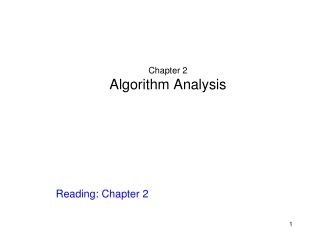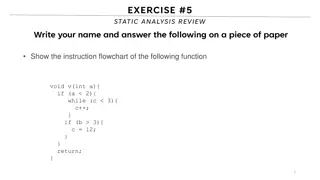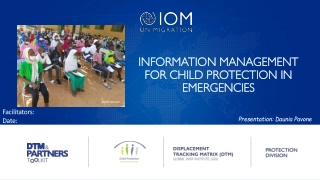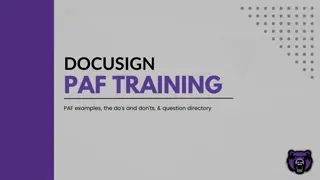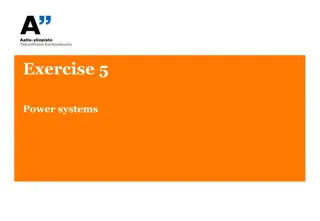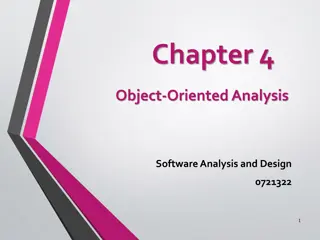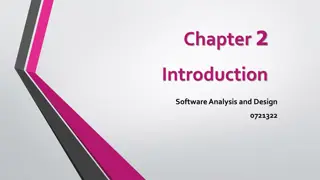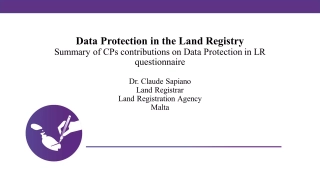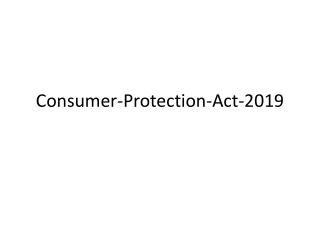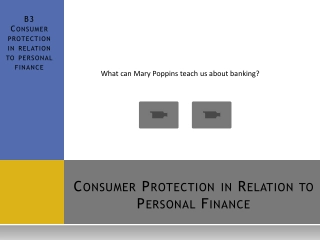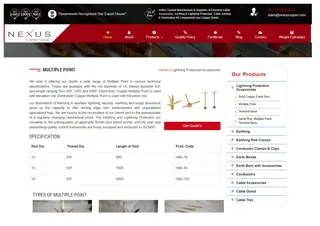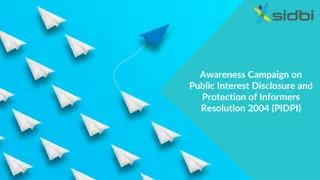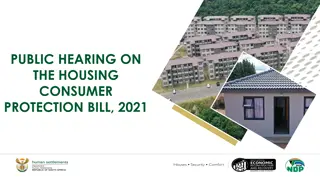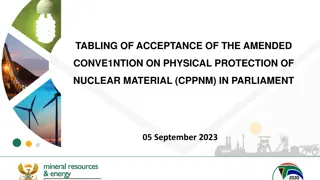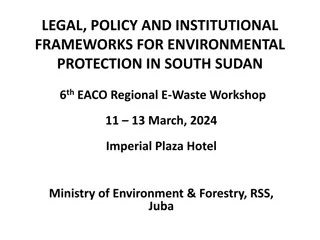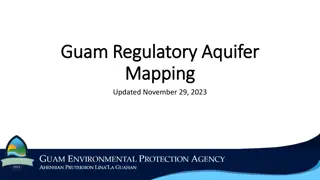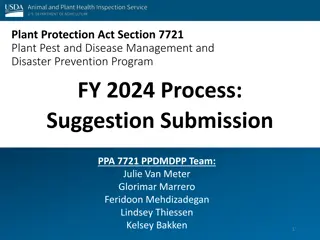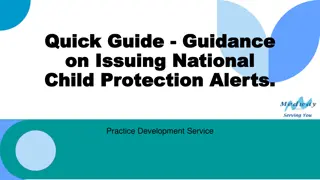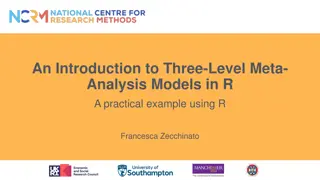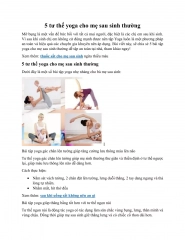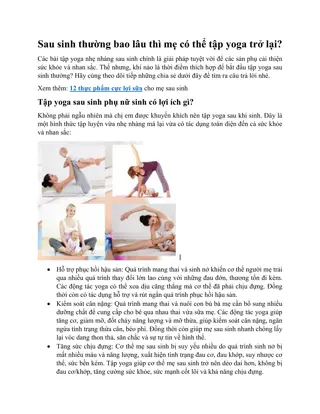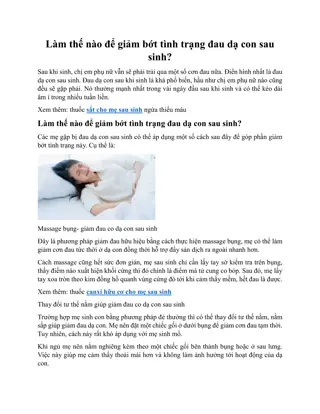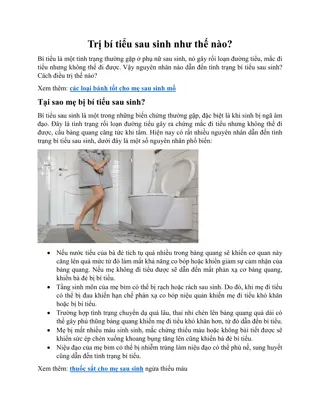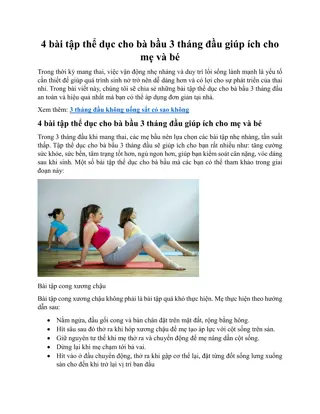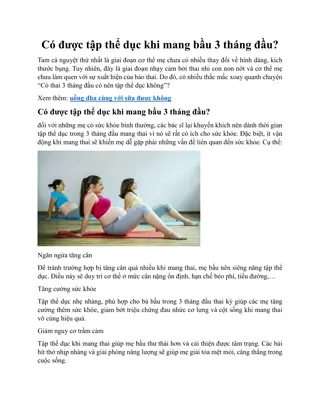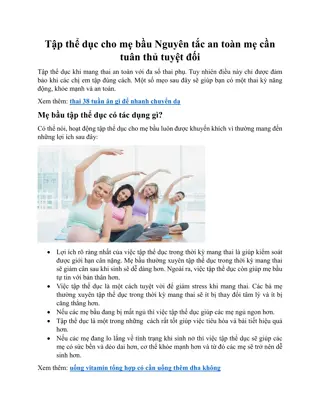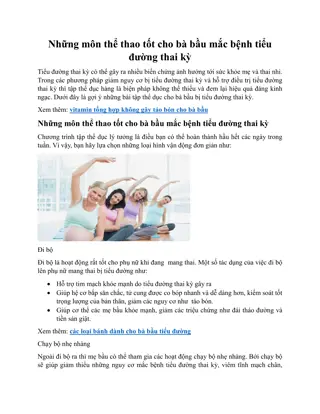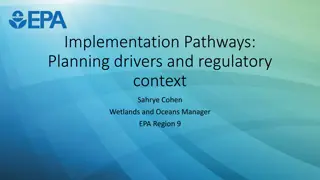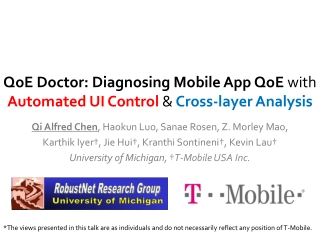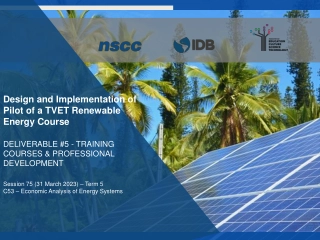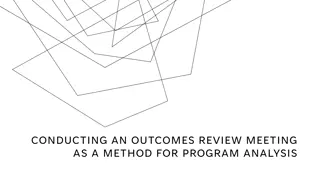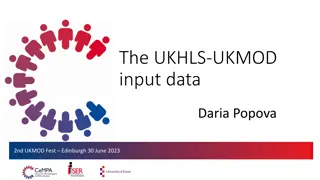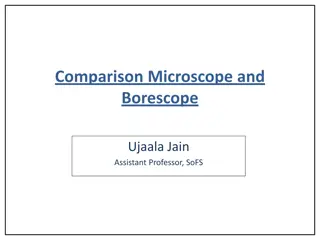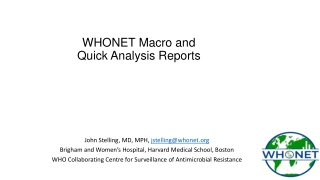Protection Analysis using the PAF
In this session, participants will learn how to utilize the Protection Analysis Framework (PAF) and its tools to conduct effective protection analysis. The session covers an overview of PAF, understanding its pillars, and analyzing data to comprehend essential protection concepts. Key points include contextual factors, historical elements, power dynamics, and legal considerations that shape protection situations. Participants will gain insights on structuring data and information for a comprehensive analysis process.
Protection Analysis using the PAF
PowerPoint presentation about 'Protection Analysis using the PAF'. This presentation describes the topic on In this session, participants will learn how to utilize the Protection Analysis Framework (PAF) and its tools to conduct effective protection analysis. The session covers an overview of PAF, understanding its pillars, and analyzing data to comprehend essential protection concepts. Key points include contextual factors, historical elements, power dynamics, and legal considerations that shape protection situations. Participants will gain insights on structuring data and information for a comprehensive analysis process.. Download this presentation absolutely free.
Presentation Transcript
Protection Analysis using the PAF Facilitators: Francesco Michele- GPC; Ayah Bsiesy and DauniaPavone-IOM Date: 25-07-2023
OBJECTIVES OBJECTIVES At the end of this session, you will At the end of this session, you will be able to be able to:: Use the PAF and its tools Use the PAF and its tools to guide to guide your your protection analysis protection analysis
1. 2. PAF and its pillars How does PAF help us understand what information we need? From Data and Information to Analysis o Understanding Essential Protection concepts SESSION SESSION 3. AT A GLANCE AT A GLANCE o Analysing using the PAF 4. Conclusions, Resources and Contact details Remember Final Test that counts towards the certificate
PAF: Protection Analysis Framework PAF: Protection Analysis Framework
Use the chat to tell us: Which image is more similar to your idea of protection analysis? 1 2
PAF: Pillars and Analysis Process PAF: Pillars and Analysis Process STRUCTURE TO ORGANIZE DATA AND INFO ANALYSIS PROCESS
PAF PAF - - Pillar 1: CONTEXT Pillar 1: CONTEXT Pillar Description FIRST LEVEL TO ORGANIZE DATA AND INFO Factors to understand what is provoking and shaping the crisis dynamics and resulting protection situation by looking at specific characteristics of the context and environment. CONTEXT Sub-pillar Description Categories SECOND LEVEL Location Tensions, conflict, and hostilities Conflict and/or hazard history Contextual historical elements that influence existing violations and show past protection threats and concerns. THIRD LEVEL Natural hazards Past trends Stability and peace Political fragility Voice and accountability Political and socio- economic landscape Contextual elements that can cause, further, or sustain current protection threats and concerns. Power dynamics Political enablers and barriers Institutional Formal and informal rules, norms, policies, or systems that contribute to current protection threats and concerns, or that counter those threats and promote a protective environment. Legal Institutional, legal, and normative landscape Norms International
PAF PAF - - Pillar 2: Pillar 2: THREATS THREATS Pillar Description FIRST LEVEL TO ORGANIZE DATA AND INFO CURRENT THREATS TO THE POPULATION Threats that are currently occurring and how these are affecting different population groups and geographic areas. Includes information describing the main actors responsible for the threat, their responsibilities and duties to protect people, and the factors causing or driving the threats. Sub-pillar Description Categories SECOND LEVEL The level of current harm to the population, in the form of violence, coercion, or deliberate deprivation, that rises to the level of a protection threat. Includes information on whether the threat is the result of a particular behaviour, organisation/group practice, or government or non- government policy or mechanism. Threats Protection Threats Type THIRD LEVEL Modality Type The responsibility of the actors involved, including identification of groups or individuals directly committing the harmful action, their affiliation and relation to affected people, and role of the actors holding specific duties. Affiliation Main actors responsible for the threat Relationship with affected people Accountability Factors that generate(d) the threat. This includes theprimary motivation(s) of the main actors responsible for the threat (perpetrators or the actor failing to uphold its duty to protect). Includes socio- economic, environmental, ethnic, or political drivers and norms that help sustain the threat, at the local, national, and/or international levels. Nature Origins of the threat Drivers Norms
PAF PAF - - Pillar 3: Pillar 3:EFFECTS EFFECTS Pillar Description FIRST LEVEL TO ORGANIZE DATA AND INFO THREAT S EFFECTS ON THE POPULATION Sub-pillar The population groups that are affected by the threats and how or why are they vulnerable to these threats and how the consequences may be different across different population groups and geographic areas Description Categories SECOND LEVEL Demography Location Characteristics of the affected population Characteristic(s) of the affected population directly affected by the threat illustrating their vulnerability in relation to the threats. THIRD LEVEL Exposure Movements Physical Consequences of the threat Primary and secondary effects or repercussions of the threat for each population group and location affected. Social and psycho-social Legal and material Evasive Action Responses (positive/negative) of the affected population to the identified consequences of the threat. Includes how the perceptions of threat influence these responses. Adjusting Affected population s coping strategies Confronting Others Perception of Threats
PAF PAF - - Pillar 4: Capacities Pillar 4: Capacities Pillar Description EXISTING CAPACITIES TO ADDRESS PROTECTION THREATS FIRST LEVEL TO ORGANIZE DATA AND INFO The resources and capabilities (skills, knowledge, social networks, and other factors) that exist at the individual and local level to address protection threats, either by mitigating the consequences or addressing the drivers of the threat. Includes analysis of any institutional responses or national and international capacities. Sub-pillar Description Categories SECOND LEVEL Physical The resources and capabilities (including skills, resources, and knowledge) of individuals, households, families, and/or other groups, to withstand the threat and its consequences. Capacities of the affected population Social and psycho-social THIRD LEVEL Legal and material Availability Protection The combination of individual and group capacities in the affected location with available institutions, systems, and actors (community, municipality, area) to mitigate or respond to the ongoing threat or consequences of the threat. This includes identifying the extent to which these institutions, systems, actors, and people are functioning, available, and acceptable to the population. Safety and Security Local mechanisms, systems and actors Services Cultural and Social Accessibility and Availability Duties Actors who have the duty to protect and the willingness and capacity to hold perpetrators to account. Describes overall institutional resources and capabilities to protect and respond, including justice and security institutions, informal mechanisms, as well as national and international protective mechanisms and responses. Governamental Institutional, other mechanisms and response capacities Other International Deterrents
2. How does PAF help us 2. How does PAF help us understand what information we understand what information we need? need?
Using PAF tools: IM and Protection Experts Using PAF tools: IM and Protection Experts IM PROTECTION EXPERTS ANALYSIS PLAN Use ANALYTICAL QUESTIONS to 1. Identify what is critical to know in the context 2. Reflect back on how we respond Use ANALYTICAL QUESTIONS to 1. Identify data needs and gaps. 2. Tag data. CONCEPT MATRIX TYPE: 1. Understand relations between threats, vulnerabilities and capacities Use language more precisely for effective messages HR/IHL: Use the analysis for human rights engagement TYPE: tag specific information HR/IHL: indications to what data may be needed for Human Rights actors 2. PAF WORKFLOW 4 STEPS AND SUB-STEPS: organize the Analysis Plan ACTIVITIES/GUIDANCE: indications on the sequenceof IM activities. Coordinate with IM and other colleagues to design a plan for data collection and analysis
How to use PAF guiding questions in practice How to use PAF guiding questions in practice Do you already have data or information answering some questions? Does the data you have help you understand? What is the purpose of our analysis? Do other questions help clarify? Is the data enough?
How to use PAF guiding questions in practice How to use PAF guiding questions in practice In our recent assessment we discovered Exploitation due to lack of civil status documentation WHAT WE KNOW.. Geographic region, specific sites Type of threat exploitation Coping strategies of affected population Source of risk Is the threat a behaviour or action, a group practice, a non-governmental or governmental policy? What are the major barriers and enablers to humanitarian, or institutional actions? What are the legal and material capacities of population to withstand consequences? Which geographic locations are affected by the threats identified? The government established economic and other criteria that cannot be met by the majority of IDP population. % of population without birth registration documents disaggregated by geographic areas. In 3 governorates, the authorities want the land occupied by IDPs to exploit resources % of households with birth certificates issued by previous government (need legal proceeding to be validated).
How to use PAF guiding questions in practice How to use PAF guiding questions in practice WHAT WE KNOW.. ..WHAT WE WANT TO UNDERSTAND Who has influence over main actors responsible How population groups may be affected differently Underlying drivers Trends What factors of the legal landscape are relevant to understanding protection threats? What are the population movements related to the population groups affected? What are the power dynamics relevant to understanding protection threats? How are the actors committing exploitation held to account? What data? What data? What data? What data? What source? What source? What source? What source?
Use the chat to tell us: What data collection exercises or other sources of secondary data can help you obtain the missing information?
How to organize data and information: example How to organize data and information: example PURPOSE: WE WANT TO UNDERSTAND IF POPULATION IS AT RISK OF FORCED DISPLACEMENT PILLAR Category What do we miss Source Protection Incident Reporting tool (Protection Cluster) IPC (Integrated Food Security Phase Classification) Verification of legal documentation being refused Impeded access to services and reasons, erosion of livelihood and use of coercion, bribery, exploitation, etc. ACCOUNTABILITY PROTECTION THREATS Exact dates of the changes in law and regulations Actual application of the law in affected governorates Enforcing by authorities (expulsion, imprisonment, etc) MSNA (Household level) House, Land and Property assessment LEGAL LANDSCAPE CONTEXT Patterns of return IDPs movements by area of origin (to understand other form of coping) Return Intentions Surveys (RIS) Durable Solutions Analysis CHARACTERISTICS OF AFFECTED POPULATION MOVEMENTS Working Group CEAL Working Group PSEA Network DTM Multi Assessment (Key Informants) EXISTING CAPACITIES TO ADDRESS PROTECTION THREATS Existing local NGOs or associations Social cohesion and/or tension with host communities CULTURAL AND SOCIAL Sectoral Location
Finding Data: Decision Making Tree Identify decision you have to take & information you need but do not have (GAPS) Does someone else have reliable data? YES Use existing data NO Add your info need in other exercise & agree on data sharing Are you able to collect this data through somebody else s planned data collection exercise? YES NO Design & Implement your data collection 19
3. From Data and Information to Analysis 3. From Data and Information to Analysis
PAF: How to organize the analysis: example PAF: How to organize the analysis: example THREATS Data or indicators illustrating the level, frequency, type of action and trend compared to previous period. According to the Sorami National Police (SNP), between June and December 2022, at least 2,344 people were killed, injured or kidnapped as a result of armed violence, which has included armed attacks, air and drone strikes, shelling, missile attacks and conflict-related sexual violence. The aggressions represent an increase of 18% compared to the 1,923 cases registered between January and June 2022. DEMOGRAPHY, LOCATION, PHYSICAL EFFECTS Brief indication of vulnerability to the identified threats, by location and demographic group Men comprise the majority of victims (86% or 2,016 individuals), followed by women (10% or 234 individuals) and children as young as 5 years old (4% or 94 individuals). No socio-economic category of the population has been spared. The number of people killed and injured in 2022 exceeded by far those documented in 2020 (1,640) and 2021 (1,989). The departments most affected are Ateppo (7% or 168), N gurtu (9% or 211), Tissura (11% or 254) and Piru (14% or 321). [ ] LOCAL MECHANISMS Primarily capacities are put in place. To mitigate violence, the Governors of Ateppo, Tissura, Piru and South Salia have unsuccessfully deployed peaceful co-existence committees, consisting of community leaders and government authorities to quell tensions and mediate disputes in hotspot locations. identify what local INTERNATIONAL RESPONSE Highlight important factors or types of international response contributing to mitigating the threat s effects. This new trend, together with the decision of the Security Council to extend the UNAMS mandate and increase the deployment of Protection of Civilians monitors, may have positive effect on the level of violence. DETERRENTS Provide a closing paragraph on one- two important deterrents identified However, this improvement is not expected for the next semester since the departmental leaders of the armed groups have a high level of autonomy. Yet, an improvement for the second part of 2023 may be possible.
PAF: PAF: How to organize the analysis document How to organize the analysis document PROTECTION ANALYTICAL FRAMEWORK LOGIC EXAMPLE DOCUMENT Past occurrences and/or trends of protection threats CONTEXT CONTEXT Current political and socio-economic enablers or drivers of threats. Current discriminatory, harmful or protective normative and regulatory frameworks PROTECTION RISKS THREATS Protection threat / violations and abuses PROTECTION RISKS EFFECTS Threat effect on the population CAPACITIES Capacities to address the threat CAPACITIES Current available protection response capacities RESPONSE Factors (political, geographical, social, others) limiting the scope of protection response and international involvement.
3.a Understanding 3.a Understanding Essential Protection Concepts Protection Concepts Essential
Foundations of Protection Analysis Foundations of Protection Analysis ORGANIZE ANALYTICAL CONCLUSIONS ORGANIZE AND STRUCTURE DATA & INFO ELABORATE FURTHER FOCUSES IDENTIFY DATA&INFO NEEDS AND GAPS PRIMARY RESULTS NEEDED FOR FOUNDATIONAL TO Protection Analysis Humanitarian Needs Overview Humanitarian Response Plans Strategy Programming Advocacy PRIORITY PROTECTION RISKS Inform and influence HC/HCT Identify partnerships Identify needs & gaps Priority geographic areas and groups Priority response needs Priority activities Activity Targets Recommendations Monitoring
Foundational concepts of Protection Analysis Foundational concepts of Protection Analysis We are increasingly worriedabout mass internal displacement ofthe population, yet no substantial evidencehas beenyet collected. PROTECTION CONCERNs / ISSUEs GENERAL WORRYING SITUATIONs Forced displacement is identifiedas a protection risk, backed by evidencefrom the PAF-led analysis. THE FINDINGS OF JOINT PROTECTION ANALYSIS OF EXISTING QUANTITATIVE AND QUALITATIVE EVIDENCE ORGANIZED ALONG THE PAF PROTECTION RISKs EVIDENCE Due to the forced displacement, we have identifiedincreased mental health and psychosocial needs. THE IDENTIFICATION OF HUMANITARIAN NEEDS RESULTING FROM ONE OR MORE PROTECTION RISKS PROTECTION NEEDs We have identifiedthat internal displacement is drivenby unlawful actionsby the Government and specificactors. THE IDENTIFICATION OF RECURRENT HUMAN RIGHTS AND INTERNATIONAL HUMANITARIAN LAW VIOLATIONS CENTRALITY OF PROTECTION
Use the chat to tell us: what actions can be implemented Foundational concepts: example Foundational concepts: example to address the protection needs? Deprivation A substantial number of affected population in the region with protection-related vulnerabilities do not have access to adequate basic services, e.g. food, shelter, health care, sanitation, education, and social welfare services. due to denial of resources, opportunities, services PROTECTION CONCERNs / ISSUEs Gender-based violence In the last 6 months, the decree 157/7 limits the movements of women in the region 15% increase of women and girls with no access to health or SRH services 23 % of HH live under the poverty line. Past three months: increase of HHs engaging in harmful coping mechanisms (15% in the last 30 days, 19% in the last 60). GBV incident monitoring is not possible. Partners and community focal points observe an increased exploitation of the HHs vulnerbility by officials and persons with authority. PROTECTION RISKs Mental health support for victims/survivors of violence Access to primary health support Access to Justice Safe spaces for children to be protected children from dangerous Ability to move freely PROTECTION NEEDs Violation of the Committee on the Elimination of Racial Discrimination and Kampala Convention article 9(2(f)). The Decree 157/7 and recent reports on state military personnel preventing IDPs in the region to access resources Reversing decree 157/7 and ensure Government and authorities accountability Exploitation and sexual abuse must be urgently addressed, CENTRALITY OF PROTECTION
Exercise: use the chat and tell us what Protection Needs could be present, and what Actions can be implemented for each protection need PROTECTION CONCERNs / ISSUEs Mass internal displacement of the population due to attacks on villages by army and militias Forced displacement Gender Based Violence Forced Recruitment and Association of Children in Armed Forces and Groups Child and Forced Family Separation PROTECTION RISKs Support on recovering from trauma Access to primary healthcare Physical protection of communities in place of displacement and origin Family Reunification PROTECTION NEEDs CENTRALITY OF PROTECTION Internal displacement is driven by unlawful actions by the Government and specific actors. Increased provision of psychosocial support for children, women and families Psychological support to individuals with a tailored approach for young men Access to mental health support for the most affected individuals Financial support to individuals to access primary healthcare (Cash) Provision of medical consumables for HealthCenters in areas of displacement Restoring Family Links (Family Tracing and Reunification Services) ICRC ACTIONS FOR PROTECTION
Protection need 3 "Physical protection of communities": What should be "actions for protection"? Who should implement them? What should we do? PROTECTION CONCERNs / ISSUEs Mass internal displacement of the population due to attacks on villages by army and militias Forced displacement Gender Based Violence Forced Recruitment and Association of Children in Armed Forces and Groups Child and Forced Family Separation PROTECTION RISKs 1. 2. 3. Physical protection of communities in place of displacement and origin 4. Family Reunification Support on recovering from trauma Access to primary healthcare PROTECTION NEEDs CENTRALITY OF PROTECTION Internal displacement is driven by unlawful actions by the Government and specific actors. Increased provision of psychosocial support for children, women and families Psychological support to individuals with a tailored approach for young men Access to mental health support for the most affected individuals Financial support to individuals to access primary healthcare (Cash) Provision of medical consumables for HealthCenters in areas of displacement Family Tracing and Reunification Services (RFL-ICRC) ACTIONS FOR PROTECTION
3.b 3.b Analysing Analysing using using the the PAF PAF
PAF: bringing information together PAF: bringing information together Interpretation of initial evidence based on other existing information and observation Verification or new insights from communities and people All evidence from available data Interpretation based on knowledge of the context Insights from operations and programs PRIORITIZATION OF FINDINGS PEOPLE PERSPECTIVE VALUE JUDGEMENT VS Quantitative DATA Qualitative INFORMATION CONTEXT PROGRAM HH: UXO presence HH: UXO presence HH: UXO presence Low risk Implementation can provide more understanding Not all the data results are relevant Language ? KI: UASC KI: UASC 2 HH: Docs HH: Docs HH: Docs HH: Docs HH: Docs Children out of school Children out of school Children out of school Children out of school School opening 3 1 Multiple data sources strengthen the analysis Important insights are not in the data Livelihood Livelihood Prioritize does not mean exclude
Did you ever use knowledge from programme or other colleagues, or conversations with affected communities to better understand what data meant? Tell us your experience!
PAF: Bringing information together to prioritize PAF: Bringing information together to prioritize Between June and December 2022, at least 2,344 people were killed, injured or kidnapped as a result of armed violence. The attacks represent an increase of 18% compared to the 1,923 cases registered between January and June 2022. More attacks so higher related protection risk ANALYSIS To mitigate violence, the Governors of Ateppo, Tissura, Piru and South Salia have unsuccessfully deployed peaceful co-existence committees. More attacks The trend of attacks relates to an occurrence The Governors of Ateppo, Tissura, Piru and South Salia are of Aremi ethnic, opposed to party in power of Runis ethnic. There has been historic trends of interference on the Governors work. The perpetrators are acting on ethnic differences The objective is to disrupt support to people The population of Ateppo, Tissura, Piru and South Salia reported having asked specifically to the Governors to establish co-existence committees. The local NGOs SRT and People for Sorami see the processes of establishment transparent, inclusive and proper. They informally report to have seen a strange increase of attacks by government supported NSAGs and interference in the process after the Governors decision. Denial of assistance and support, and discrimination by the government supported NSAGs 1 Between June and December, attacks to civilian population driven by discrimination by the government supported NSAGs 2
Individual Exercise: Read the handout in the chat and tell us: What protection risks should we prioritise? List of 15 Protection risks List of 15 Protection risks In a Country Far In a Country Far Far Far Away! Away! Conflict in country Far Far Away has lasted 14 years and resulted in approximately 1,108,385 IDPs. The last 10 Humanitarian Response Plans have shown a steady increase of People in Need. The rule of law and the governmental services almost all disrupted, besides the support to medium and large scale farmers in the North and East areas of the country, being Far Far Away depending on agricultural exports. have been Protection Risks Explanatory note: https://www.globalprotectioncluster.org/publications/994/training- materials/template/protection-risks-explanatory-note
Individual Exercise: Read the handout in the chat and tell us: What protection risks should we prioritise? What you know... What you know... VS PEOPLE PERSPECTIVE VALUE JUDGEMENT Quantitative DATA Qualitative INFORMATION CONTEXT PROGRAM affecting almost all households and parents report that they need to have fewer mouths to feed (forcing marriage of girls for example) or leave the house to forage for food, leaving young children alone. In the last 3 months several schools and alternative educational services have been put in place, and partners report that the current child protection services are not effective in addressing rising risks. Food insecurity is From the last reporting (3 months ago) 45% of children are out of school due to conflict. There are multiple reports of a renewed and genuine interest of local officials and authorities to improve the situation in many areas of the country. The 2 main parties in conflict agreed on peace 10 months ago. The funding for essential services is now going to regional governments, that started implementation since 5 months ago. There has been a 15% increase of Key informants interviews reporting unacco mpanied children in their areas. Kidnapping and recruitment of boys and girls into non- state armed groups seem increasing. Boys are forced to become fighters, and girls are forced to marry fighters. Partners did not face any interference from NSAGs (they actually report better relations), but where not present, civilian objects (fields, livelihood facilities) are attacked or destroyed,specifically in the South. The former UN mission has been suspended after the peace agreement. The monitoring of violations have stopped and, while HC/HCT are establishing a new system, there has been no official monitoring in the last 5 months. There are 2 main NSAGs that are not accepting the outcomes of the peace, and people in the whole South and East areas of the country report harassment, kidnapping, destruction of livelihoods, including fields and cattle.
Exercise part 2: With the information you have, and making some assumption, write a risk statement in the chat for each priority risks Use the Protection Analytical Framework to organize your logic: 1. Context: What is driving the risk? 2. Threat: What violation and abuses are causing harm? 3. Threat s effects: What are the main effects to the population? 4. Capacities: Are there capacities mitigating the effects?
Example: Risk 1- Attacks on Civilians, killings & on Civilian Objects Context: What is driving the risk? There are 2 main NSAGs that are not accepting the outcomes of the peace, and people in the whole South and East areas of the country report harassment, kidnapping, destruction of livelihoods, including fields and cattle Harassment, kidnapping, destruction of livelihoods, including fields and cattle Civilian objects (fields, livelihood facilities) are attacked or destroyed, specifically in the South. Food insecurity is affecting almost all households and parents report that they need to have fewer mouths to feed (forcing marriage of girls for example) or leave the house to forage for food, leaving young children alone. Family separation, loss of liberty and forced recruitment (from kidnapping) Improved Humanitarian Access: Partners did not face any interference from NSAGs (they actually report better relations) The funding for essential services is now going to regional governments, that started implementation 5 months ago. Threat: What violation and abuses are causing harm? Threat s effects: What are the main effects to the population? Capacities: Are there capacities mitigating the effects? Actions for Protection
Example: Risk 7- Forced Recruitment and association of children to armed forces and groups Use the Protection Analytical Framework to organize your logic: Context: What is driving the risk? Food insecurity is affecting almost all households and parents report that they need to have fewer mouths to feed (forcing marriage of girls for example) People in the whole South and East areas of the country report harassment, kidnapping, destruction of livelihoods, including fields and cattle Threat: What violation and abuses are causing harm? Recruitment of boys and girls into non-state armed groups seem increasing. Threat s effects: What are the main effects to the population? Boys are forced to become fighters, and girls are forced to marry fighters. Capacities: Are there capacities mitigating the effects? Improved Humanitarian Access: Partners did not face any interference from NSAGs (they actually report better relations) The funding for essential services is now going to regional governments, that started implementation 5 months ago There are multiple reports of a renewed and genuine interest of local officials and authorities to improve the situation in many areas of the country.
PAF: How to use analysis for planning your PAF: How to use analysis for planning your response response Provision of victim assistance (GBV, CP, MA) ATTACKS Between June and December 2022, at least 2,344 people were killed, injured or kidnapped as a result of armed violence. The attacks represent an increase of 18% compared to the 1,923 cases registered between January and June 2022. Mine action Non-technical survey (NTS) KILLED, INJURED KIDNAPPED MHPSS Support (non-specialized) Institutional support to strengthen the decentralization and governance legal frameworks. GOVERNORS SUPPORT TO POP. To mitigate violence, the Governors of Ateppo, Tissura, Piru and South Salia have unsuccessfully deployed peaceful co-existence committees. Institutional support to peaceful co-existence committees. Active negotiation and lobby with the Runi government to increase access and Protection of Civilians PEACEFUL CO-EXISTENC COMM Denial of assistance and support, and discrimination by supported NSAGs are of Aremi ethnic, opposed to party in power of Runis ethnic. There has been historic trends of interference on the Governors work. the government 1 The Governors of Ateppo, Tissura, Piru and South Salia INTERFERENCE GOVERNMENT ETHNIC RIVALRIES. Community dialogue on formal and informal conflict management mechanisms Between June and December, attacks to civilian population discrimination by supported NSAGs reported having asked specifically to the Governors to establish co-existence committees. driven government by 2 the The population of Ateppo, Tissura, Piru and South Salia BARRIERS TO SERVICES Social, economic and education reintegration The local NGOs SRT and People for Sorami see the processes of establishment transparent, inclusive and proper. They informally report to have seen a strange increase of attacks by government supported NSAGs and interference in the process after the Governors decision. Active negotiation and lobby with the Runi government to increase access and Protection of Civilians Reporting on NSAGs violation NSAGs DISRUPTION
PAF: How to use analysis for planning your PAF: How to use analysis for planning your response response RESPONSIVE Provision of victim assistance (GBV, CP, MA) Social, economic and education reintegration Mine action Non-technical survey (NTS) MHPSS Support (non-specialized) HRP HRP HRP HRP Denial of assistance and support, and discrimination by supported NSAGs REMEDIAL response response the government 1 UNSDC Institutional support to peaceful co-existence committees. Community dialogue on formal and informal conflict management mechanisms Between June and December, attacks to civilian population discrimination by supported NSAGs driven government by HRP / UNDP 2 the ENVIRONMENT BUILDING HCT Active negotiation and lobby with the Runi government to increase access and Protection of Civilians Reporting on NSAGs violation of .. Institutional support to strengthen the decentralization and governance legal frameworks. OHCHR UNSDC
PAF: How to use analysis for planning your PAF: How to use analysis for planning your response response RESPONSIVE any activity patterns of abuse, putting a stop to it, and/or alleviating its immediate effects. aimed at preventing REMEDIAL any activity aimed at restoring people s dignity and ensuring adequate living conditions, subsequent to harm ENVIRONMENT BUILDING any activity aimed at creating and/or consolidating an conducive to full respect for the rights of the individual. environment
4. Conclusions 4. Conclusions
Resources Identify and Explain Protection Risks- GPC video: https://www.youtube.com/watch?v=PktExEnVz6A&t=1712s Protection Risks Explanatory note: https://www.globalprotectioncluster.org/publications/994/training- materials/template/protection-risks-explanatory-note Protection Risks Global Overview: https://www.globalprotectioncluster.org/protection-issues Plan Elaborate and Use Protection Analysis Update in Operation - video: https://www.youtube.com/watch?v=Fij_EgWujl0&t=7s Protection Analysis Updates (PAU) Annotated Template: https://www.globalprotectioncluster.org/publications/992/training- materials/template/protection-analysis-updates-annotated-template Protection risk analysis in PAUs tutorial: https://www.globalprotectioncluster.org/publications/993/training-materials/template/annex-1- protection-risk-analysis-paus-tutorial PAF guidance and Tools: https://www.globalprotectioncluster.org/field-support/Protection-Analytical- Framework
Contact Details Francesco Michele Michele@unhcr.org (Strategic Analysis and Advocacy Officer - Global Protection Cluster) Resources Daunia Pavone dpavone@iom.int (Senior Information Management and Analysis Advisor - Protection in Emergencies&DTM) Nadia Akmoun nakmoun@iom.int (Snr Protection Officer PXD)
DID WE REACH OUT OBJECTIVE? DID WE REACH OUT OBJECTIVE? Can we now Can we now use the PAF and its tools to guide your protection analysis?
Certificates Attend or listen to the recording of each of the 11 sessions Read the additional material for self study: Material to study for final exam Complete the knowledge tests (one per session)- see the emails you received with this link for each session. Complete the final exam (two parts: a multiple-choice test, and an assignment that will take some time and thinking to complete): FINAL EXAM 1 2 3 4 The Sharepoint folder includes the course material and recordings: SDP 2022-23 DATA AND ANALYSIS FOR PROTECTION The deadline to complete all the requirements is 31 October 2023. If you need more time, please contact me about it. Public
Self-Study Material Protection IM e-learning http://pim.onl/index.html 1 PAF video Sources and methods for Primary Data Collection: https://youtu.be/tJLHlM7_M6c 2 IM for CT in Emergencies: Summary Session (https://www.youtube.com/watch?v=5AWKNbiySVY&ab_channel=DTMandPartnersToolkit) 3 Frequently Asked Questions on DTM for the Global Protection Cluster NEW (8 pages) https://displacement.iom.int/dtm-partners-toolkit/protection (first document in the folder) 4 DTM and GBV data in short (4 pages): https://displacement.iom.int/dtm-partners-toolkit/gbv-0 5 Public
Date: 9 August Date: 9 August 2023 2023 SDP DAP EXTRA session: Data for persons with diverse Sexual Orientation, Gender Identity and Expression, Sex Characteristics Public
